Are waterfall countertops 2024's biggest kitchen trend? Here's everything you need to know about this luxurious design feature
This striking countertop design adds a sense of luxury to a kitchen scheme
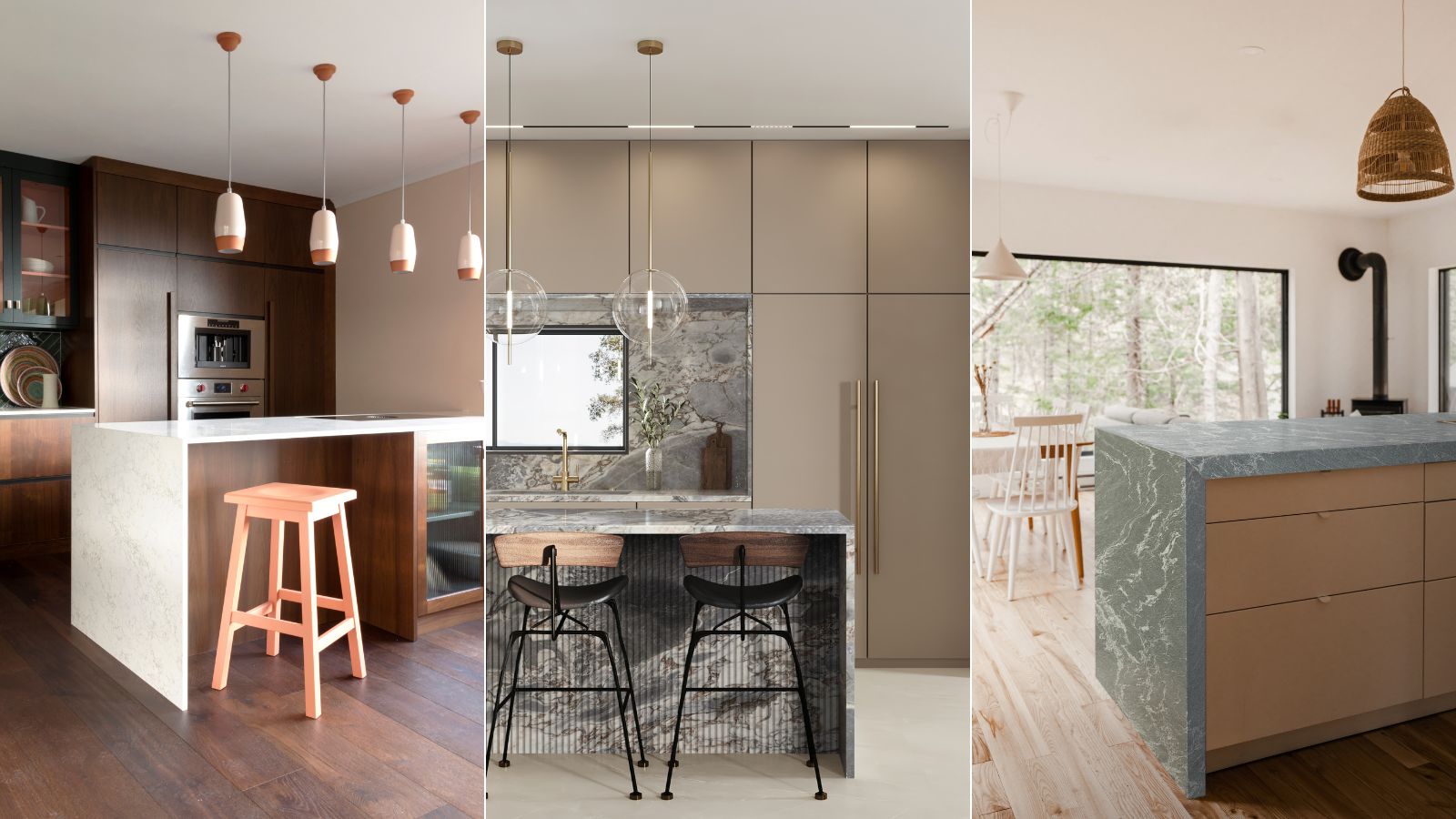

Waterfall countertops are trending, but what are they, and are they a worthy investment? As we search for design elements that add luxury and timeless appeal to our homes, attention is turning to the kitchen and the features that will endure.
When it comes to kitchen trends, it's important only to introduce designs that you will love for a long time – kitchen countertops are a high-cost feature, so you can't just swap them out when you tire of them. When you choose your countertop design, ensuring the design feels timeless while matching your design style is key.
Waterfall countertops are a luxurious design style that interior designers are excited about, but should you introduce one to your scheme? We've asked the experts to find out everything there is to know about this trending design feature.
What is a waterfall countertop?
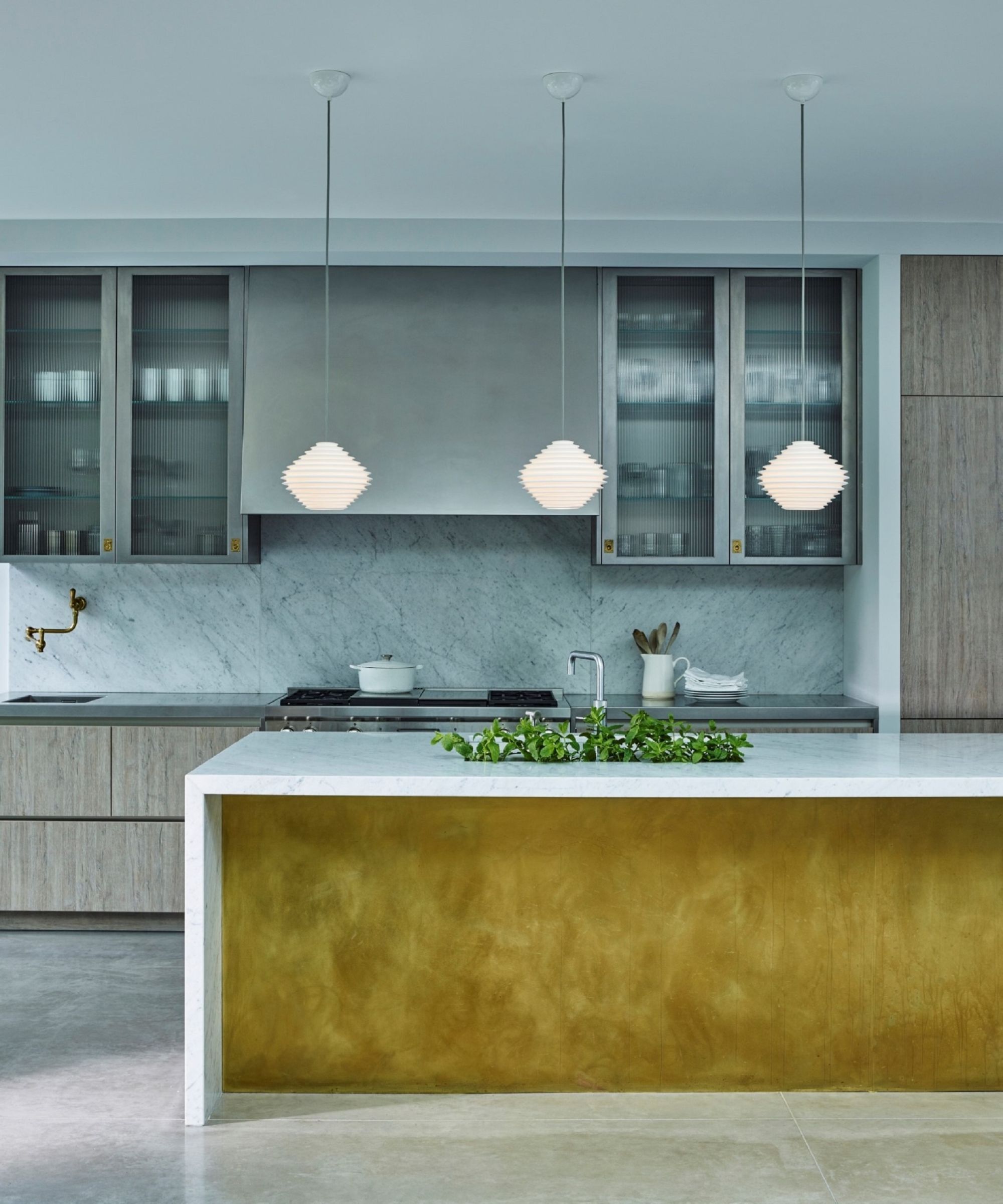
Waterfall countertops are an aesthetic way to create a seamless kitchen design. Using stone, the countertop creates a feature that instantly gives the kitchen a more bespoke feel. 'A waterfall kitchen countertop is where the stone wraps around both the top and side or sides of an island or the end of a cabinet run,' explains Elizabeth Sherwin, creative director of Naked Kitchens.
This free-flowing design gives a more finished look to a kitchen island, rather than all the sides being exposed. 'Waterfall countertops create a seamless flow from the surface to the floor. This design gives the appearance of the countertop ‘cascading’ down, much like a waterfall,' adds Oli Webb, director at Cullifords.
While this is a relatively simple design feature, it adds a more dramatic, statement look than traditional cabinetry and counters. 'We recommend book matching stone at the transition from the top of the counter to the leg to provide a sleek and timeless look,' suggests Natalie Rebuck, principal designer at Re: Design Architects. This will ensure your scheme feels classic, rather than simply trend-driven.
What is the best material for a waterfall countertop?
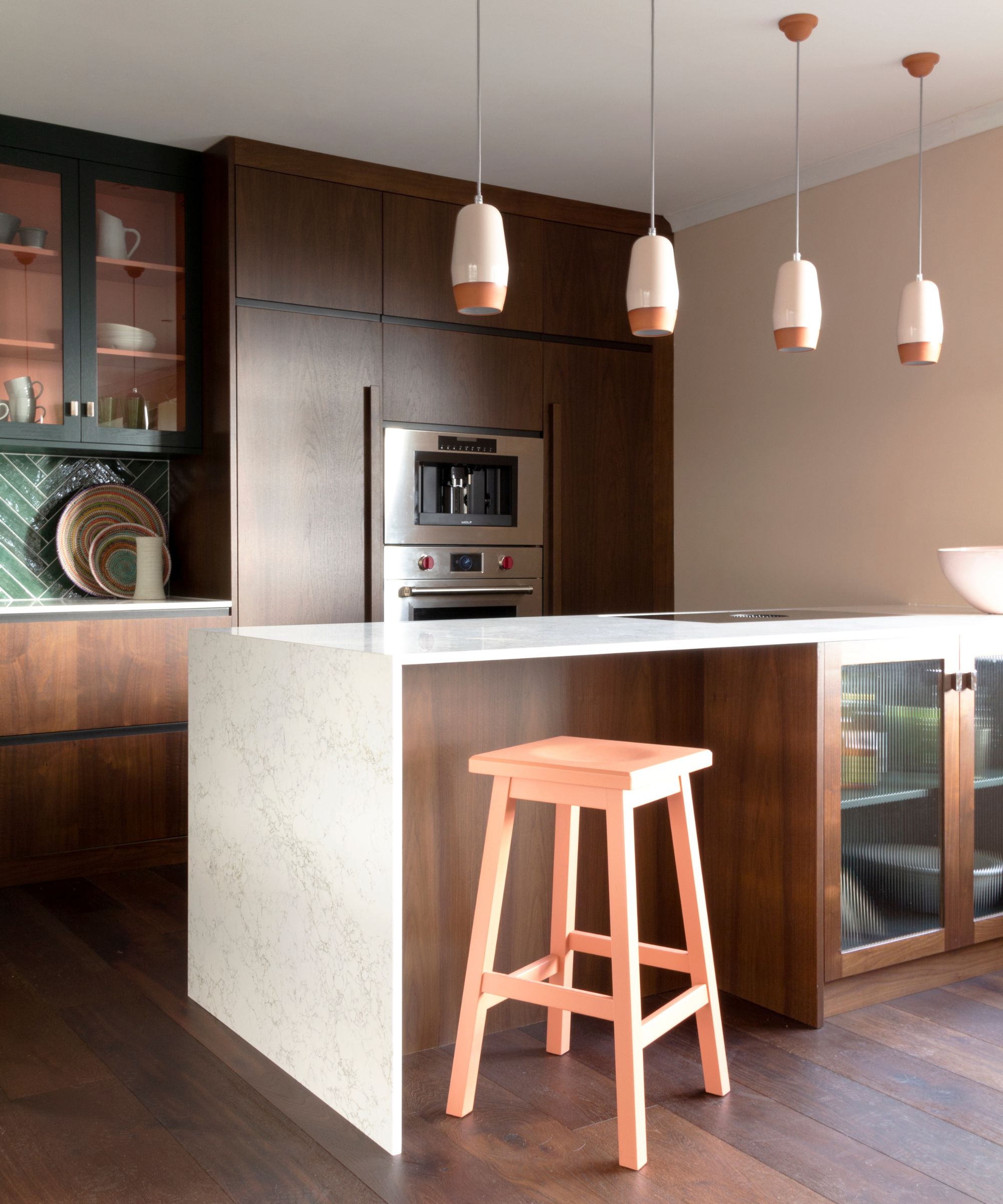
If you plan to introduce a waterfall countertop to your kitchen scheme, good quality material is required for a luxe design. 'High-quality materials such as granite, marble, limestone, and quartz are great choices as they offer both durability and visual appeal. Consider the thickness of the material, with thicker slabs making a bolder statement and thinner slabs looking more understated,' explains Oli.
When choosing a countertop material, consider the design style of your kitchen to ensure you select something that feels cohesive. 'There is an incredible array of materials you can choose from which will depend on your lifestyle and the scheme of your home,' says Alex Main, director at The Main Company.
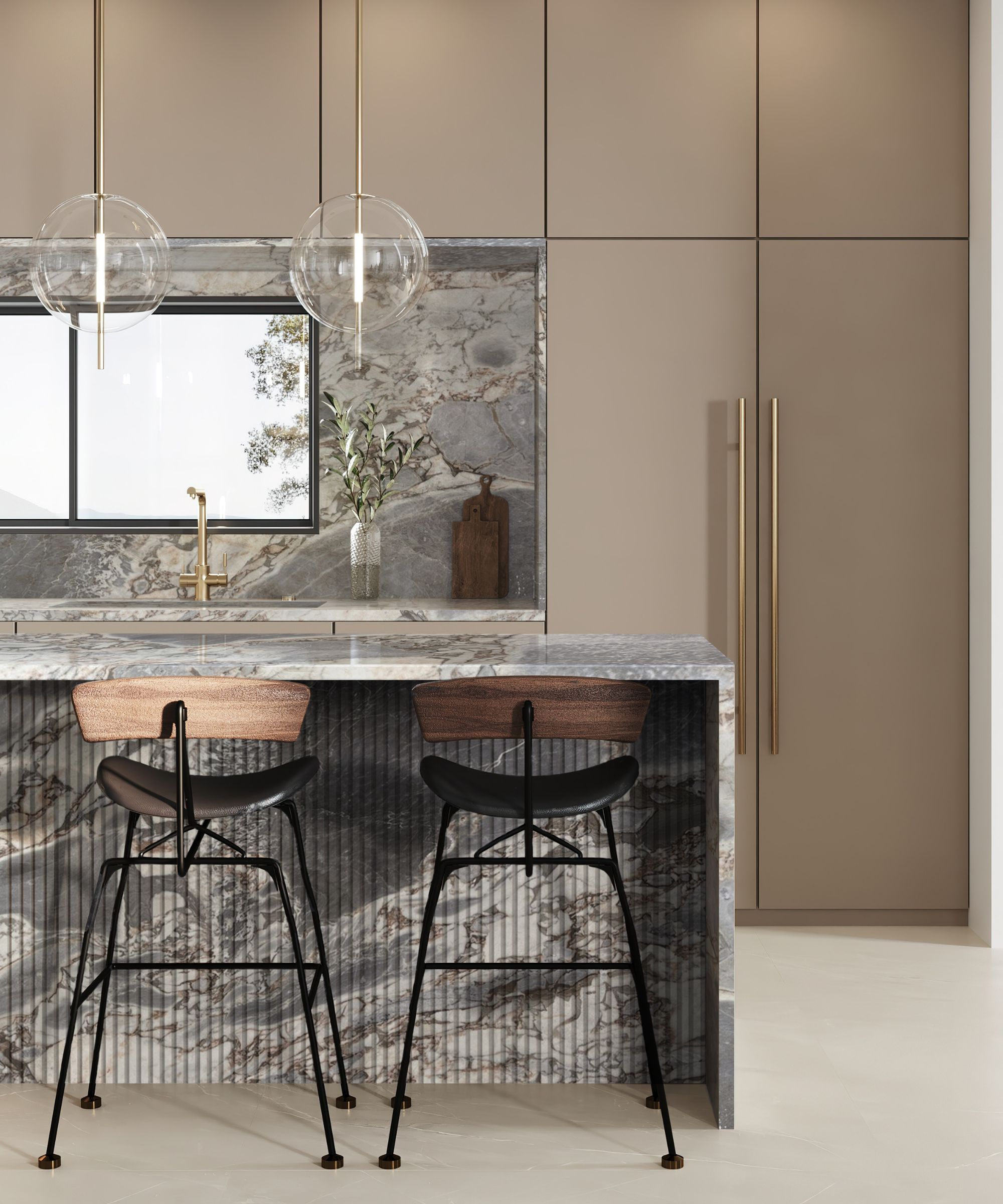
'Reclaimed wood is a timeless choice that works in both traditional and contemporary settings, but other options like quartz, concrete, or marble also work well, especially in modern homes,' Alex adds.
Certain materials prove most popular, particularly natural stone for its practical and aesthetic benefits. 'Marble is often a popular choice for countertops, but Quartz is another option and is very on-trend right now,' says Natalie.
While quartz is very on trend at the moment, consider the material that not only looks right in your space but that you will love for years to come. More traditional stone options might be slightly more expensive, but they prove timeless and ever-on style.
Should you choose a waterfall countertop?
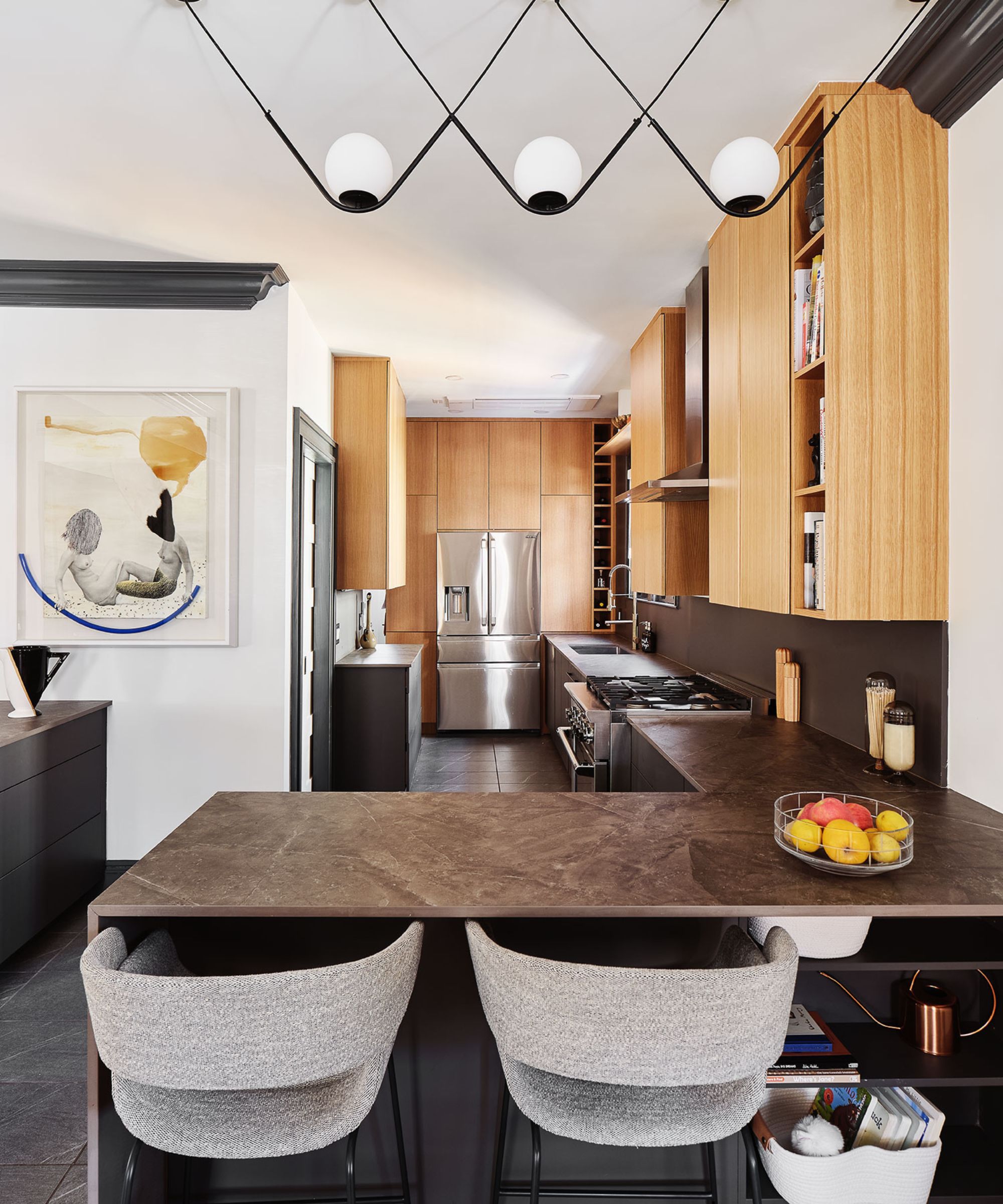
Not only are they aesthetically beautiful, but they can add practical elements, too. 'Waterfall countertops have a lovely modern clean look which unites the cabinetry enhancing sleek lines. The countertop can overhang the island cabinetry to create a seating area which is then neatly enclosed with a waterfall end,' explains Elizabeth.
There's also the added benefit of a more luxurious design feature that creates a bespoke look – with a statement stone with a beautiful vein, it can quickly become the talking point of your scheme.
'If the worktop material has a distinctive grain pattern, it's lovely for this to run continuously along the worktop and waterfall end,' she adds, but this will need to be kept in mind when choosing the right slab.
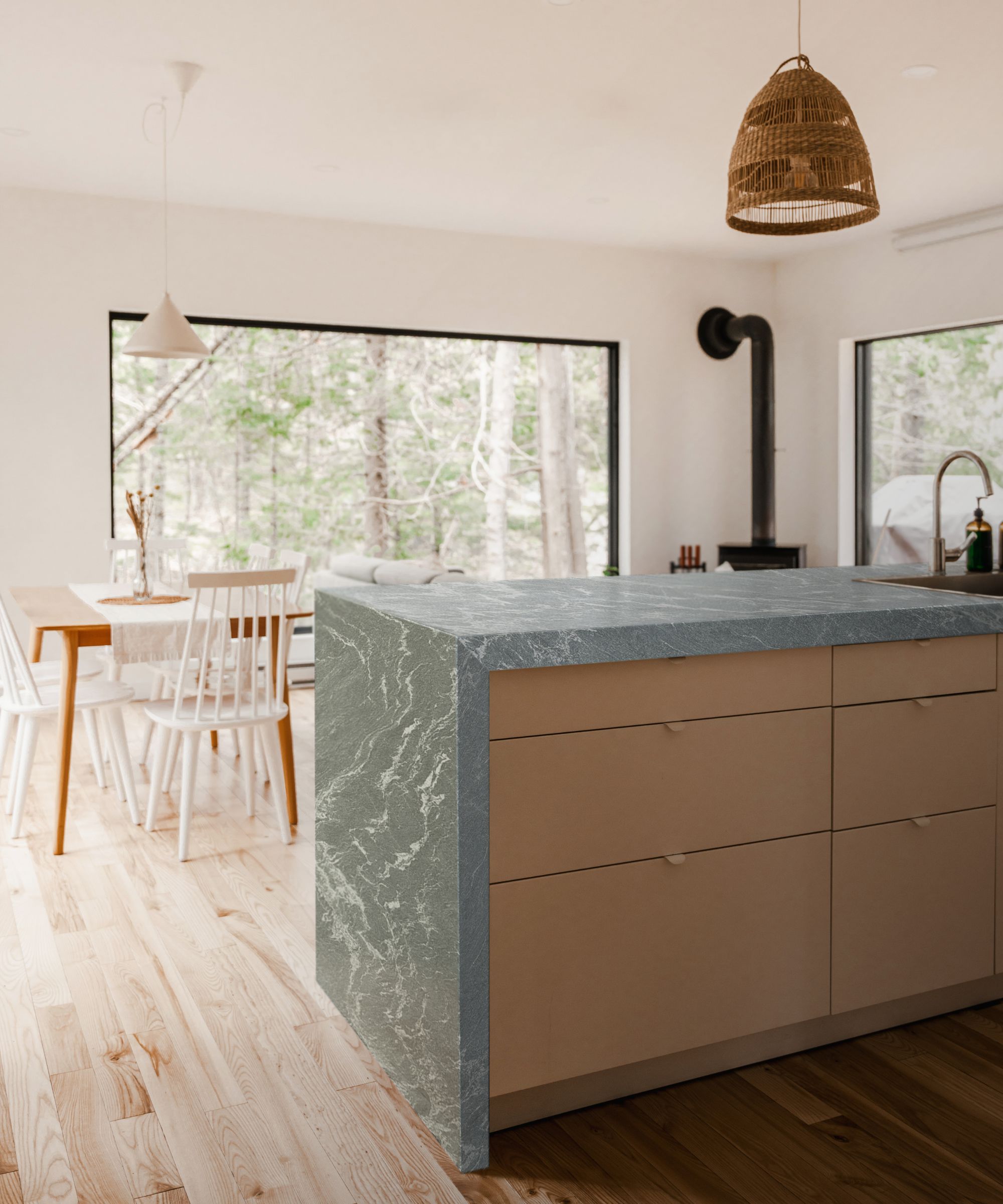
There are some additional factors to consider when deciding if a waterfall countertop is the right choice for your kitchen. 'With an island, having a waterfall countertop reduces access to the island so you can no longer design in a cupboard along this edge,' Elizabeth warns. If maximizing storage in your kitchen is a priority, you will need to consider how the waterfall edge will impact it.
There is, of course, a budget factor to think about, too. 'The downside is that it will increase the cost of the countertop. It means purchasing more of the marble – or whichever stone you choose for the space – which can be a bit pricey,' says Natalie.
As well as the amount of stone you need, it's worth noting for an eye-catching design, the type of stone that works best might be on the more luxurious side, especially if you want something with a distinct vein.
Waterfall countertops are the luxurious kitchen trend interior designers are loving, and with the right materials and design, you can create a truly timeless scheme with this feature.
Sign up to the Homes & Gardens newsletter
Design expertise in your inbox – from inspiring decorating ideas and beautiful celebrity homes to practical gardening advice and shopping round-ups.

I’ve worked in the interiors magazine industry for the past five years and joined Homes & Gardens at the beginning of 2024 as the Kitchens & Bathrooms editor. While I love every part of interior design, kitchens and bathrooms are some of the most exciting to design, conceptualize, and write about. There are so many trends, materials, colors, and playful decor elements to explore and experiment with.
-
 Plants never to grow next to fruit trees
Plants never to grow next to fruit treesExpert advice on which plants to keep away from fruit trees to encourage a healthy harvest
By Jacky Parker Published
-
 Martha Stewart's tips for arranging daffodils are unbelievably simple and effective – it's the only flower advice you need this springtime
Martha Stewart's tips for arranging daffodils are unbelievably simple and effective – it's the only flower advice you need this springtimeMartha shows us that we can create gorgeous bouquets of this seasonal flower by simply trimming the stems and placing them in specific vases
By Hannah Ziegler Published